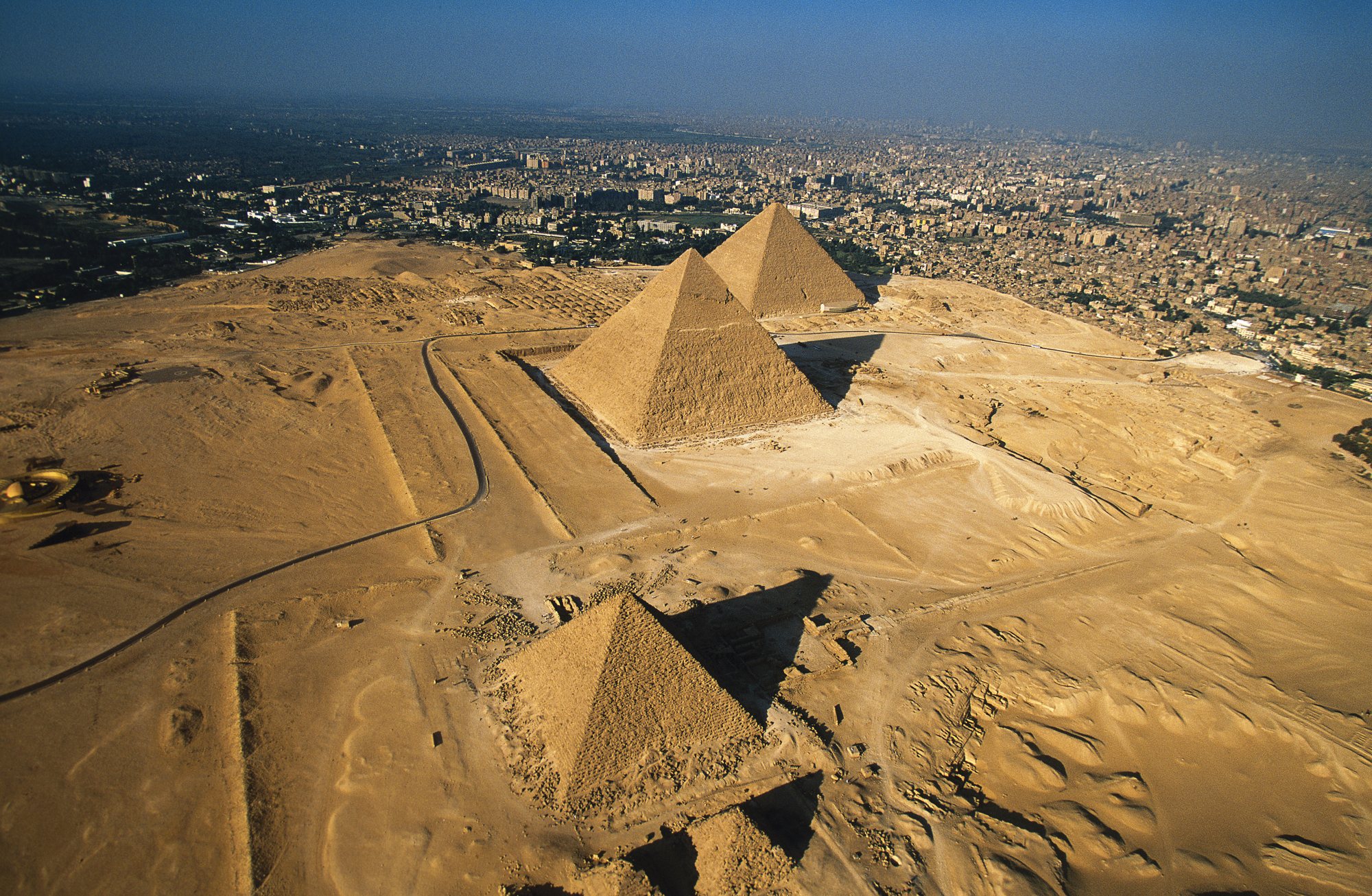They call it the 'Pyramid Diagonal' and it connected the dead pharaohs with a powerful resurrection machine.
There are lots of good, practical reasons why a pharaoh might choose to have his pyramid built in a particular spot. It might be that a certain site is quite level and so requires less preparation. Perhaps there is a good supply of easily quarried stone nearby. Or maybe the flooding Nile came right up to the 'doorstep', which facilitated floating in decorative granite from Aswan.
For three kings of Egypt's Fourth Dynasty however, the overriding factor for the location of their sacred sites seems to more about how they were aligned with another one on the other side of the Nile: Heliopolis.
You can't see it now, swamped by the sprawling suburbia of Cairo, but 24 kilometres northeast of the Giza was once the sacred centre of Heliopolis. This was the seat of worship of the sun god, RA, and so a particularly special place if you identified yourself as the son of Ra, as the Fourth and Fifth Dynasty kings did.
Heliopolis was also the site of the sacred benben stone, the squat obelisk-shaped stone; the stone of creation. The Egyptians viewed the benben stone as the solidified seed of the creator god, Atum. It also represented the solid mound that rose from the watery chaos on the first day of creation. Some believe that the benben stone was in the shape of a squat obelisk, and could very well have inspired the design of the pyramids themselves.
In Egypt's Old and Middle Kingdoms, giant pyramids were the symbol of the power of the pharaoh over death. The Fourth and Fifth Dynasty kings in particular were dedicated followers of Ra. They saw in the sun a supernatural daily resurrection, with Ra sinking into the Underworld in the evening, to be re-born triumphantly at dawn. Given these factors, it should come as no great surprise that the placement of the Giza pyramids was carefully chosen to align with Heliopolis.
An imaginary line connects the south-eastern corner of all three giant Giza pyramids with the temple of Heliopolis, which was plainly visible in ancient times. An imaginary line connects the south-eastern corner of all three giant Giza pyramids with the temple of Heliopolis, which was plainly visible in ancient times. Although Menkaure's pyramid is often seen to be out of alignment with those of his father and grandfather, the south-eastern corner lines up perfectly.
Sadly the benben stone, as with most of Heliopolis, has disappeared. Virtually all that remains today is a standing obelisk erected by the 12th Dynasty's King Senusret I, ca. 1,950 B.C. It would have been raised to decorate the great temple there, and our line connecting the Giza pyramids passes just a few metres south-east of the obelisk.
Photo: Yann Arthus-Bertrand
